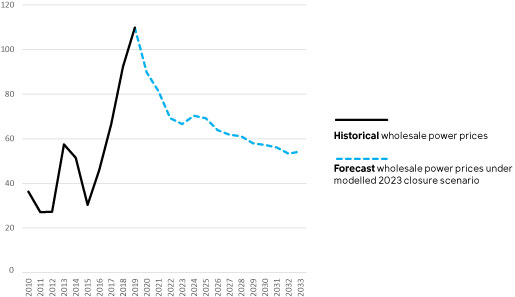REPLACING YALLOURN WOULD REDUCE PRICES
Preparation is the key to avoiding price spikes when a coal power station closes.
By making immediate investments to replace Yallourn wholesale prices would fall faster than current trends and help avoid a price spike at the moment of closure, like those seen when Hazelwood power station closed at short notice in 2017.

Source Reputex p.21: Scaling up clean energy with storage and modernising our grid means prices fall faster under the “replace Yallourn” scenario. There’s only a minor and short-lived blip in prices at the moment Yallourn is modelled to close in 2023, then the downward trend resumes.